
All categories
Featured selections
Trade Assurance
Buyer Central
Help Center
Get the app
Become a supplier

(3500 products available)



























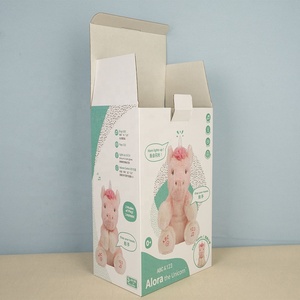
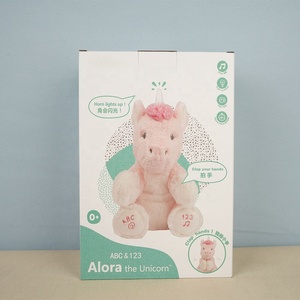
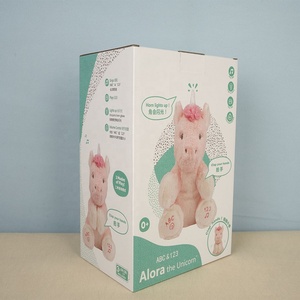
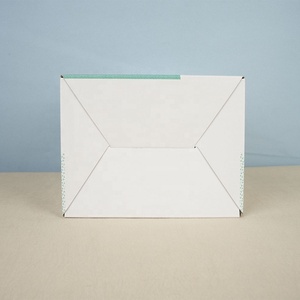
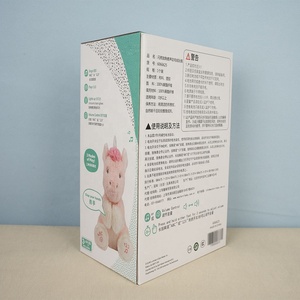
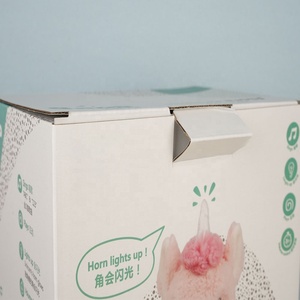



















Toy boxes are storage furniture designed to hold and organize children's toys. They come in different shapes, sizes, and materials, offering various functional and aesthetic features. Some common types of toy boxes include:
Classic wooden toy boxes:
Classic wooden toy boxes are made of durable wood. They are strong and last a long time. These toy boxes often look nice and can be used for many years. They have enough space to keep toys, books, and other things tidy. Classic wooden toy boxes are simple but useful for organizing and storing different items safely. They are a go-to choice for many families because they are reliable and work well.
Plastic toy boxes:
Plastic toy boxes are storage solutions made from durable plastic material. These toy boxes are designed to keep and organize children's toys. They are usually lightweight, easy to clean, and come in various colorful options. Plastic toy boxes are practical and convenient for storing toys, helping keep play areas neat and tidy. They may feature handles for easy carrying and lids or covers to open and close easily. Plastic toy boxes are affordable and long-lasting, making them a popular choice for families and schools.
Fabric toy boxes:
Fabric toy boxes are storage containers made from different types of fabric material. They are soft, lightweight, and often foldable, making them easy to use and store when not needed. Fabric toy boxes come in various colors and designs. They help keep children's toys organized and tidy. With their gentle texture and appealing looks, fabric toy boxes suit a child's playroom or bedroom well. They provide a safe and convenient way to put away toys at the end of playtime.
Personalized toy boxes:
Personalized toy boxes are storage containers for children's toys that can be customized with a child's name, initials, or other unique designs. This personalization makes the toy box special for that child. It helps keep things organized and adds a personal touch to their play area. Personalized toy boxes are often made from wood, metal, or plastic. They can also have chosen colors and decorations. These toy boxes make cleaning up more fun and help decorate a child's room.
LED light-up toy boxes:
LED light-up toy boxes are storage containers for toys that have built-in lights powered by LEDs (Light Emitting Diodes). These lights can make the toy box glow or light up in different colors. It helps children see better inside the box in the dark and adds a fun, colorful look. LED light-up toy boxes may also have lights that change based on how busy the toys are or that respond when the lid opens or close. These boxes are not only useful for keeping things tidy but also exciting and playful.
Musical toy boxes:
Musical toy boxes are storage containers that play music or make sounds when opened, closed, or interacted with. Some may play a happy tune when the lid is lifted, or produce melodies if buttons, keys, or handles are pressed. The sounds can come from built-in speakers, sound chips, or musical mechanisms inside the box. Musical toy boxes make organizing and playing with toys more enjoyable. They engage children's curiosity and add an extra layer of fun to keeping things tidy.
Although toy boxes come in various shapes and sizes, their designs ensure that they are aesthetically pleasing and functional.
Aesthetics
The aesthetics of a toy box are important. This is why most boxes have bright and attractive colors. Some boxes even have themes, like princesses or dinosaurs. These make the toy boxes look great in a child's room or play area. They also match the room's decor. Toy boxes can also have decorative decals or stickers. These personalize the box and make it unique. Some boxes may have artwork or patterns printed on them. These make the toy storage look stylish and fun. The toy boxes also have options for finishes. They can have a glossy finish that makes them shine, or a matte finish that makes them look soft. The toy storage can also have features like decorative edges or molding. These details make the box look fancy or sophisticated. The aesthetics of a toy box are important. They make cleaning up more fun and help keep the room looking nice.
Functional design
Functional design is crucial in making a toy box usable. This is why most boxes have handles. They make it easy to carry the box from one place to another. The handles are sturdy and comfortable to hold. They help kids move their toys where they want them. Toy boxes also have hinges on the lid. These keep it attached to the box. Hinges help the lid open and close smoothly. They prevent fingers from getting pinched. Toy boxes may also have wheels or casters on the bottom. These help move the box around. Wheels make it easy to clean up or rearrange a play area. Some toy boxes have removable liners or bins inside. These help organize toys by type or use. It makes finding and putting away toys easier. The functional design of a toy box makes it safe and easy to use. It helps keep the play area tidy and the toys organized.
In a lot of scenarios, the toy boxes are found to be very helpful. This is why these boxes are an important part of a child's life. Some scenarios where the toy box becomes a necessity are as follows:
Playtime:
During playtime, children take out toys from the box and leave them all over the floor. After playtime is over, toy boxes become handy again because kids can put all their toys back inside the box to keep everything neat and tidy until the next time they want to play again.
Organizational skills:
They help kids learn how to organize their stuff properly. Instead of leaving toys scattered everywhere, which could cause accidents or make it hard to find things later on, they encourage young ones to put like things together so that all action figures are in one place, dolls in another, and so on. This instills good habits from an early age about maintaining orderliness within personal spaces.
Storage solutions:
During long periods when no playing happens, such as mealtimes, bath times, or bedtimes, toy boxes provide excellent storage solutions for keeping all play materials safely out of reach until the next session. This ensures that nothing gets lost or damaged due to improper handling while also preventing any potential hazards resulting from leaving loose items lying around.
Peaceful environment:
When everything is stored away inside the toy chest, there is less visual clutter, resulting in a more peaceful environment where children can focus better without distractions everywhere. Only what is necessary for the current activities at hand should be brought out while everything else remains neatly packed away until required again.
Traveling:
When going on family trips, vacations, or outings, having a convenient means of transporting some of a child's favorite games and activities can be achieved through the use of a portable play equipment container. It ensures that young ones do not get bored during long car rides or while waiting at airports, thereby keeping them entertained throughout the journey.
Special occasions:
On birthdays or holidays, when receiving new gifts, it becomes necessary to find space within the home for these additional items so as not to create any messes. Therefore, the aforementioned containers become useful once again by providing places where all newly acquired playthings can be stored until they are ready to be played with.
Picking the right toy bins for kids is very important. It's not just about storing toys. It's about making the play space safe, neat, and fun. Here are some key points to keep in mind:
Safety first:
Safety is the most important thing. Pick bins with no sharp edges. They should be smooth all over. Avoid toy boxes with lids that slam shut. It could pinch young fingers. Instead, choose those with slow-close hinges or removable lids. They help stop accidents. Also, go for sturdy bins that don't tip over easily. It keeps kids safe while they play and clean up.
Size matters:
Think about how much space is available. Don't let the toy boxes take up too much room. They should fit without crowding. If the box is too big, it could make the room feel messy. It could also cause problems. The box should be big enough to hold all the toys. It should allow for growth as the child's toy collection expands. Large toy boxes mean fewer trips to fill them. But they must be balanced against the space they occupy.
Material choice:
Pick a sturdy material that will last a long time and be safe for kids. Wood looks good and lasts a long time. But, make sure it has no exposed nails or splinters. Plastic bins are lighter and come in many colors. They are easy to clean but may not last as long. Fabric boxes are soft and washable. But, they need more support to hold their shape over time. Consider each material's pros and cons. Pick one that fits the family best.
Design matters:
The toy box design should be easy for kids to use. It must help them clean up independently. It is good to have low sides. They allow kids to see and reach their toys easily. Consider labels or see-through features to help kids find what they want. The best designs encourage kids to put away what they used. It keeps the play area neat and safe.
Multi-purpose:
Think about how well the toy box can be used. It is good if it works in many ways. It reduces the need for extra furniture. Some bins double as storage and benches. Others hide themselves as stylish tables. Multi-purpose options save space and look great in any play area. They also give added value.
Budget-friendly:
Keep the budget in mind. Toy bins come in many prices. Make sure to consider the cost and the quality. It must last a long time. Sometimes, spending a little more means getting something that will work better and stay safe for kids. But, don't forget to look for budget-friendly options on toy boxes Walmart offers without compromising quality.
Q1: What are the benefits of using a toy box?
A1: A toy box provides a centralized storage solution, promoting organization and tidiness. It makes cleaning easier, as children can learn to put their toys in one place. Moreover, it reduces the risk of tripping over scattered toys, thereby minimizing accidents. Toy boxes also have the advantage of keeping play items out of sight, helping maintain a neat and uncluttered living space.
Q2: Are toy boxes safe for children?
A2: Safety is an important consideration when choosing a toy box. Look for features such as anti-slam hinges that prevent fingers from getting trapped and lid supports that stop the lid from falling. Also, ensure that the toy box is sturdy and not easily tipped over and that no small parts can come loose and pose a choking hazard.
Q3: How can one clean and maintain a toy box?
A3: Regular cleaning is essential to maintain the toy box's appearance and hygiene. Use a soft cloth to wipe away dust and dirt, and make sure to clean it inside and out. For stubborn stains, a mild soap solution can be used. Ensure that the toy box is completely dry before closing the lid or putting away toys.
Q4: What features should be considered when purchasing a toy box?
A4: When buying a toy box, consider its size, capacity, and the materials used. Make sure the toy box is large enough to hold all the toys but not so big that it overwhelms the room. Also, look for one made from durable material, such as solid wood or MDF, which will last longer. Finally, consider any additional features, such as wheels for easy movement or dividers for organized storage.